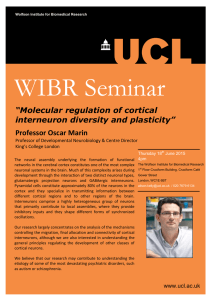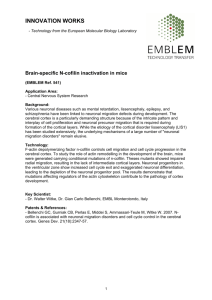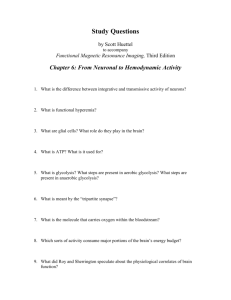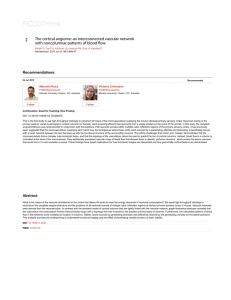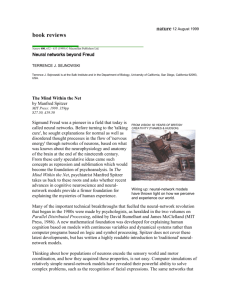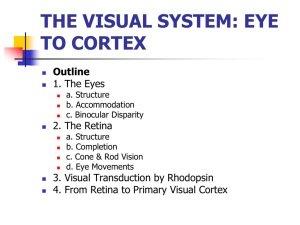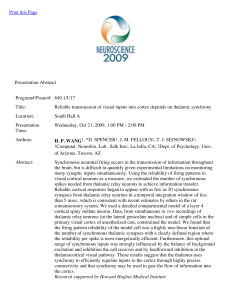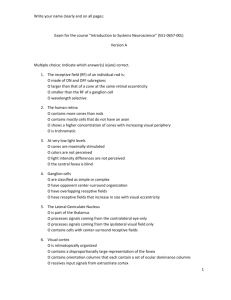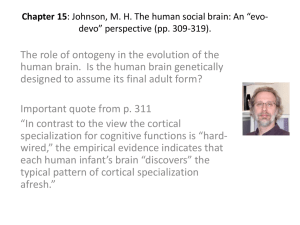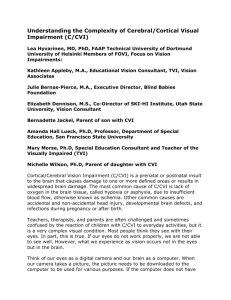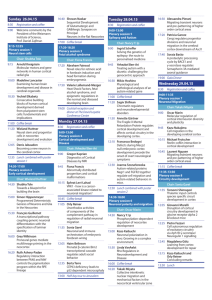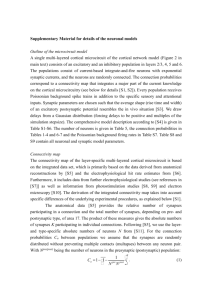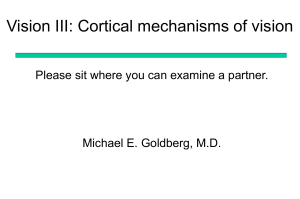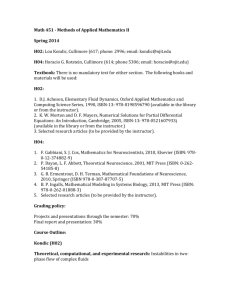Ocular Dominance Columns
advertisement
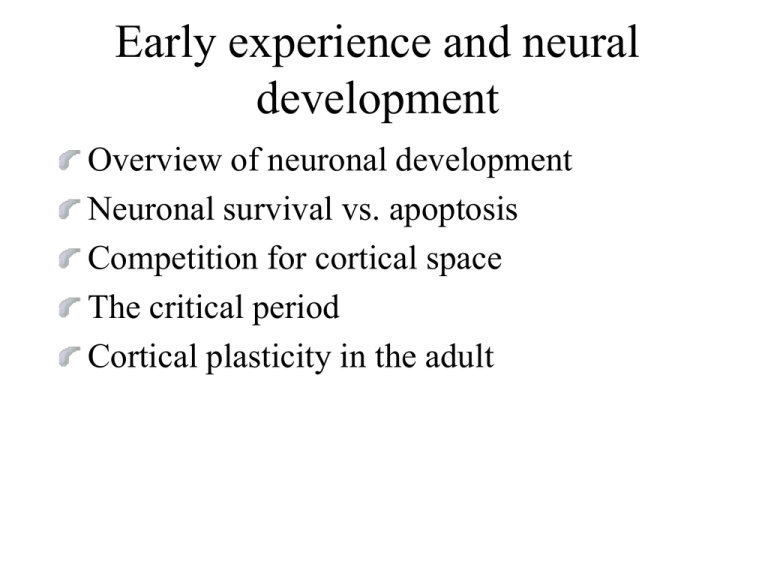
Early experience and neural development Overview of neuronal development Neuronal survival vs. apoptosis Competition for cortical space The critical period Cortical plasticity in the adult Neuronal Development Growth and Differentiation of the Vertebrate Brain CNS begins to form at two weeks gestation At birth, brain weighs 350g, at one year 1,000g Growth and Development of Neurons Proliferation- production of new cells Migration- move toward final destination Differentiation- form axons and dendrites Diverse shapes of neurons Transplantation experiments Myelination- addition of insulating sheath Neuronal survival At 11 weeks (gestational age) we have 2-3 times as many neurons as needed “Pruning”: As connections are formed the number drops (until 25 weeks) What determines which neurons survive? Studies by Hamburger, Levi-Montalcini Neuronal survival What determines which neurons survive? Studies by Hamburger, Levi-Montalcini Competition for “trophic factor” secreted by target examples: NGF, BDNF, GDNF; (specific receptors on neurons) Winners survive, losers undergo “apoptosis” (programmed cell death) Who wins competition for connections/ trophic factors? - Activity dependent development of primary visual cortex (V1): Ocular Dominance Columns (ODC) Visual system: partly crossed in human, monkey, cat Each half of V1 receives input from both eyes Some V1 cells respond to only one eye, some to both Cells with similar ocular dominance are organized in columns Changing the balance of activity between the two eyes: Effects of Monocular Deprivation - early vs. late deprivation; “critical period” Binocular deprivation birth to 3 months (monkey) Observations in Frog Visual System Questions: 1. How would you demonstrate involvement of trophic factor? 2. What implication do the findings have for the removal of congenital cataract? (video clip) Conclusions Neuronal survival is mediated by competition for targetderived trophic factors. Similarly, cortical organization is mediated by activitydependent competition early in life (i.e. during the critical period). This activity-dependent competition appears to be mediated by trophic factors. Normal experience during the critical period that leads to normal neural activity is essential for normal cortical development. How drastically can cortical organization be influenced by sensory inputs? - auditory cortex responds to vision in “rewired” ferret brains (von Melchner et al., 2000) - visual cortex in the congenitally blind is responsive to touch Plasticity later in life Cortical reorganization in somatosensory cortex: - monkey amputation studies - phantom limbs - string players - effects of non-use in stroke patients Phantom Limb Sensations: Sensations in amputated hand arise when face is touched. Explanation: Axons from face now activate hand area in cortex. Since neurons in cortex hand area represent feelings in hand, their activity is experienced as arising from non-existent hand!
